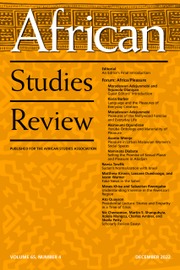Part of review forum on “A dam for Africa”
A Dam for Africa is a beautifully written tour de force account of the Akosombo Dam’s construction, the politics and debates enveloping it, and its meaning in the Ghanaian national psyche. It is a global history built from an intense scrutinization of the local while illuminating how global forces and figures shaped what was possible within the local. A Dam for Africa demonstrates how to situate Ghana within local and global historical paradigms. Local African actors and ideas are never sidelined from the “bigger” story. In fact, they represent the “bigger,” global history. This is reflected in the book’s methodology and sources.
Miescher conducts oral histories to account for those displaced by the Akosombo Dam, those who lived in the Akosombo Township, and Volta Aluminum Company’s (VALCO’s) staff and management. “Oral histories,” Miescher argues, “can correct the silences of the resettlement archive that tends to privilege the interactions of senior male community leaders with government officials” (240). These testimonies buttress one of Miescher’s central contentions, that the resettlement process was anything but a smooth affair, as the written records proclaim. However, the written archive is not absent.
Reflecting the mobilities of his actors, Miescher’s archival sites are transnationally situated in Ghana, the United Kingdom, and the United States. While certain chapters emphasize particular collections, the main sources, and not exhaustive, are the private collections of Edgar Kaiser, the president of Kaiser Industries and chairman of Kaiser Aluminum and Chemical Corporation, the company’s materials, the Electricity Company of Ghana’s (ECG’s) archive, and Ghanaian newspapers. In many Cold War histories, the African technocrat, expert, is an elusive figure lost behind African leaders or foreign experts. In examining the underutilized ECG archive, Miescher breathes life into the ‘illusive’ figure of the African technocrat. This is one of the book’s signature interventions. Moreover, A Dam for Africa unpacks the dialectical engagement between the African technocrat and non-technocrat through community petitions seeking “rural electrification” (280). Miescher’s approach, capturing the voices of the elite, the marginalized, and the bureaucratic class, should be seen as a methodological and archival template for historians of the postcolony.
What propels the book forward is the transformation of Nkrumah’s modernization dreams, expressed and embodied through the Akosombo Dam’s construction, into a national nightmare. In Miescher’s rendering, the Dam turns Ghana from a postcolony into a neocolony. A Dam for Africa portrays Kaiser as a shrewd “corporate diplomat” who got the deal he wanted at Ghana’s expense due to Nkrumah’s stubborn obsession with the project (103–104). It is only two decades later, in the 1980s, that an inspired Ghanaian negotiation team of African technocrats, Miescher argues, forced VALCO to renegotiate the exploitative Nkrumah-era contract (147). This is only one step, albeit a very important one, in fixing the shortcomings of the Nkrumah era.
Indeed, broken Nkrumah-era promises and attempts to resolve them subsequently abound in A Dam for Africa. As Miescher notes: “Most of the project’s grand promises remained unfulfilled … the resettlement of the eighty thousand people living in the Volta Basin resulted in trauma, broken lives, and hardship” (7). While Nkrumah insisted that no one would be worse off after the Dam’s creation, Miescher argues that those relocated (voluntarily or involuntarily) suffered and became worse off. Many of the promised resettlement homes were never completed. Moreover, the Nkrumah government’s promise that “every town and village would receive electricity after the completion of Akosombo” remained unfulfilled (289). While electricity circulated across southern Ghana, in particular, many in Ghana and those impacted by the Dam’s construction were without light. Access to electrical power, or a lack thereof, Miescher argues, became a “marker of citizenship” (11, 278). While many pleaded for electricity for decades, in some cases, when it finally arrived, it was too expensive to access. Consequently, people began sharing electrical meters illegally (339) or letting their electrical bills pile up before the ECG turned off their lights (343), another reminder of unrealized dreams.
As the final chapters illustrate, whether civilian or military, successive Ghanaian governments have had to contend with the growing avalanche of national discontent about Ghana’s power situation, with each regime promising various solutions (and failing). Miescher employs “energy politics” to show how political success in Ghana has hinged on the government’s ability to bring power. Post-Nkrumah, every Ghanaian regime has seen its political and financial fate tied to the Akosombo Dam.
Miescher notes, “The [power] outages affected Ghana’s national selfhood. The country of many firsts, which had exported power according to Nkrumah’s pan-African vision since 1972, had to beg for electricity imports from Côte d’Ivoire” (347). The Dam, then, Miescher argues, has become a symbol of Ghana’s national identity. Once emblematic of national pride and modernization, it now symbolizes national decline and failure.
A Dam for Africa is an absorbing and somber read about how the Dam and electricity generated debates about modernity, nationhood, and citizenship in a postcolonial African nation. This book will undoubtedly be considered one of the most important works produced on Ghana’s history.


